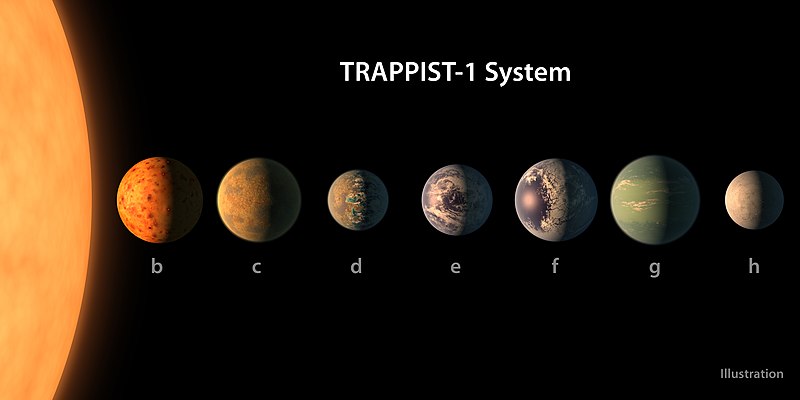فائل:PIA21422 - TRAPPIST-1 Planet Lineup, Figure 1.jpg

ایس وکھالے دا ناپ: ۸۰۰ × ۴۰۰ پکسلز۔ دوجے ریزولوشنز: ۳۲۰ × ۱۶۰ پکسلز | ۶۴۰ × ۳۲۰ پکسلز | ۱,۰۲۴ × ۵۱۲ پکسلز | ۱,۲۸۰ × ۶۴۰ پکسلز | ۲,۵۶۰ × ۱,۲۸۰ پکسلز | ۶,۰۰۰ × ۳,۰۰۰ پکسلز ۔
اصل فائل (۶,۰۰۰ × ۳,۰۰۰ پکسلز, فائل حجم: ۲.۶۳ میگابائٹ, MIME type: image/jpeg)
فائل دی تریخ
فائل نو اس ویلے دی حالت وچ ویکھن واسطے تاریخ/ویلے تے کلک کرو۔
| تریخ تے ویلہ | نکی مورت | پاسے | ورتن والا | تیپّݨی کرو | |
|---|---|---|---|---|---|
| موجودہ | ۲۳:۳۹, ۲۲ فروری ۲۰۱۷ |  | ۶,۰۰۰ × ۳,۰۰۰ (۲.۶۳ میگابائٹ) | PhilipTerryGraham | User created page with UploadWizard |
فائل دی ورتوں
تھلے دتے گئے 1 صفحے اس فائل نال جُڑدے نیں
فائل ویاپک ورتوں
ایہہ دوجے وکیاں ایس فائل نوں ورتدے نیں –
- af.wikipedia.org تے ورتوں
- ar.wikipedia.org تے ورتوں
- bn.wikipedia.org تے ورتوں
- ca.wikipedia.org تے ورتوں
- el.wikipedia.org تے ورتوں
- en.wikipedia.org تے ورتوں
- es.wikipedia.org تے ورتوں
- et.wikipedia.org تے ورتوں
- fi.wikipedia.org تے ورتوں
- fi.wikibooks.org تے ورتوں
- glk.wikipedia.org تے ورتوں
- id.wikipedia.org تے ورتوں
- ja.wikipedia.org تے ورتوں
- ku.wikipedia.org تے ورتوں
- lt.wikipedia.org تے ورتوں
- ms.wikipedia.org تے ورتوں
- my.wikipedia.org تے ورتوں
- nl.wikipedia.org تے ورتوں
- pt.wikipedia.org تے ورتوں
- ro.wikipedia.org تے ورتوں
- tl.wikipedia.org تے ورتوں
- tr.wikipedia.org تے ورتوں
- uk.wikipedia.org تے ورتوں
- ur.wikipedia.org تے ورتوں
- vi.wikipedia.org تے ورتوں




